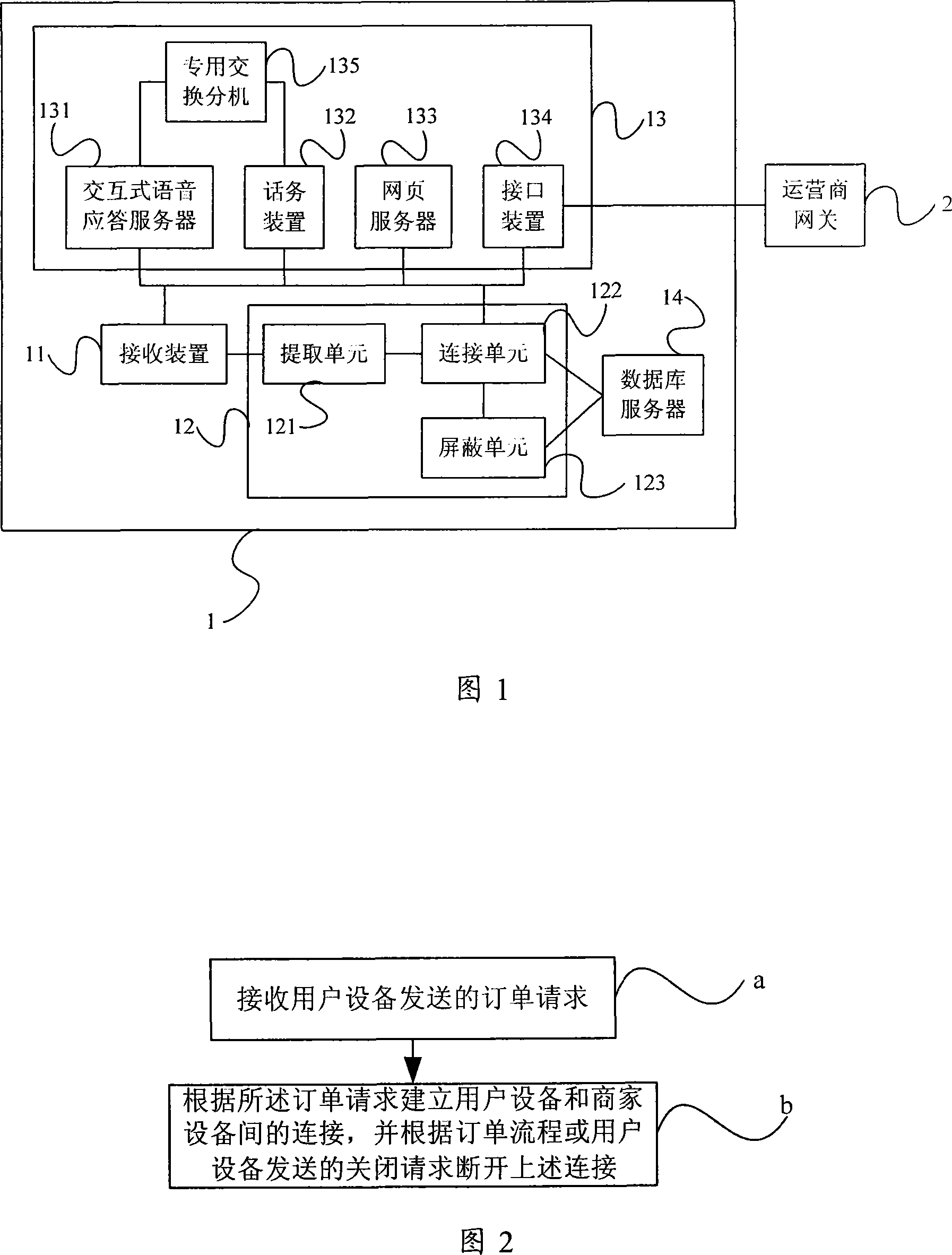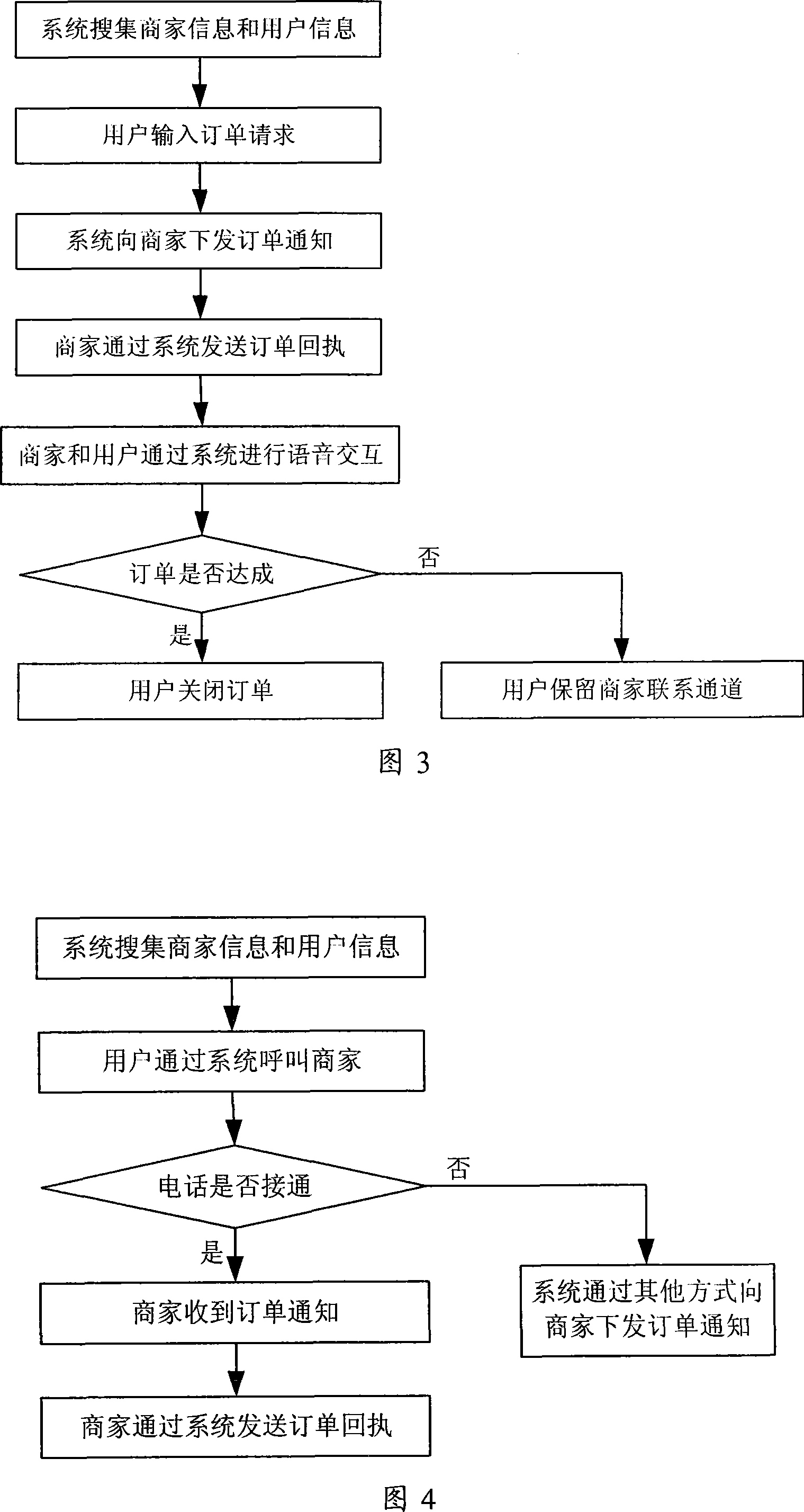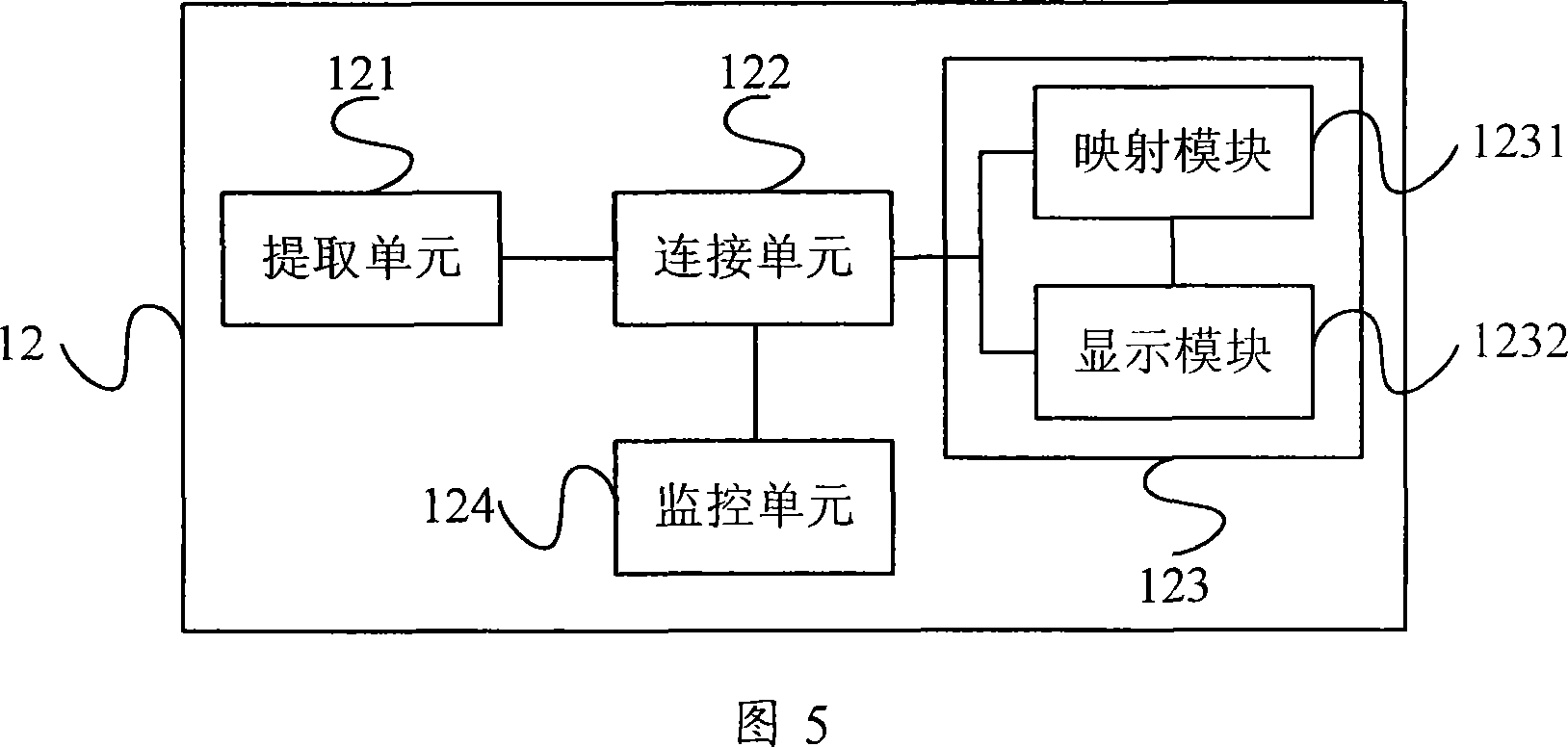System, method and device for implementing order interactive
A technology of order and contact information, applied in business, instruments, data processing applications, etc., can solve the problems of time uncertainty, poor ease of use, inability to prevent merchant harassment, etc., to improve initiative and efficiency, avoid merchant harassment, Guaranteed effectiveness
- Summary
- Abstract
- Description
- Claims
- Application Information
AI Technical Summary
Problems solved by technology
Method used
Image
Examples
Embodiment Construction
[0021] In order to make the purpose, technical solution and advantages of the present invention clearer, the following will further describe the implementation of the present invention in detail in conjunction with the accompanying drawings.
[0022] The first embodiment of the present invention provides a system 1 for realizing order interaction, referring to FIG. 1 , including: a receiving device 11, configured to receive an order request sent by a user equipment; a processing device 12, configured to receive an order request sent by the receiving device 11, Establishing the connection between the user equipment and the merchant equipment according to the order request, and disconnecting the connection according to the order process or the closing request sent by the user equipment. By establishing a connection between user equipment and merchant equipment, users and merchants can interact synchronously, ensuring the effectiveness of supply and demand information, and improvi...
PUM
 Login to View More
Login to View More Abstract
Description
Claims
Application Information
 Login to View More
Login to View More - R&D
- Intellectual Property
- Life Sciences
- Materials
- Tech Scout
- Unparalleled Data Quality
- Higher Quality Content
- 60% Fewer Hallucinations
Browse by: Latest US Patents, China's latest patents, Technical Efficacy Thesaurus, Application Domain, Technology Topic, Popular Technical Reports.
© 2025 PatSnap. All rights reserved.Legal|Privacy policy|Modern Slavery Act Transparency Statement|Sitemap|About US| Contact US: help@patsnap.com



